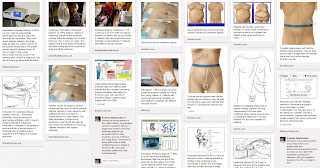Complications
1. Peritonitis and Catheter-Related Infections: Peritonitis is thought to occur most often by touch contamination, but may also occur in the setting of a catheter exit site or tunnel infection. Patients with peritonitis usually present with cloudy peritoneal fluid and abdominal pain. Infections due to gram-positive cocci (Staphylococcus epidermidis and Staphylococcus aureus) tend to be most common (60–70% episodes) compared to infections with gram-negative bacteria (15–25%) or fungi (2–3%). Treatment should be continued for a total of 2 weeks, while more severe infections due to S aureus, pseudomonas, or multiple gram-negative organisms should be treated for 3 weeks. Patients should be taught to perform routine exitsite care in order to prevent catheter infections. Daily cleansing with antibacterial soap and water is recommended by most centers. The daily application of mupirocin or gentamicin cream to the exit site has been shown to be effective in reducing catheter infections and related peritonitis.
2. Mechanical Complications such as hernia, scrotal or labial edema.
3. Encapsulating Peritoneal Sclerosis: a rare but serious condition characterized by extensive intraperitoneal fibrosis and encasement of bowel loops.
4. Ultrafiltration Failure
5. Metabolic Complications
Indications for peritoneal dialysis catheter removal:
1. Refractory peritonitis: failure to respond to appropriate antibiotics within 5 days
2. Fungal peritonitis
3. Relapsing peritonitis
4. Peritonitis in the setting of severe exit site or tunnel infection
5. Peritonitis due to multiple enteric organisms in the setting of a surgical abdomen
Dietary modifications:
A protein intake of at least 1.2 g/kg is recommended for PD patients.
National Kidney Foundation has great handbook. To view please Click Here
For information on nutrition and peritoneal dialysis please Click Here
Ardavan Mashhadian D.O.
Nephrologist
1400 S Grand Ave Suite 615, Los Angeles, CA 90015
(213) 537-0328


